Videos—3MJ: Return (Asia)

-
Return—Asia: Assos
-
Assos: Roman Road
Paul’s planned trip from Corinth to Jerusalem directly by sea after the shipping lanes reopened that spring was interrupted by discovery of a plot on his life. For safety, he went instead the much longer route by land, retracing his steps through Macedonia and Asia (Acts 20:3). He picked up a large contingent of companions in Macedonia, likely representatives of churches that contributed to the collection for the saints in Jerusalem that Paul was attempting to deliver (Acts 20:4). The group split into two parties that sailed by different portage to Troas (Acts 20:5–6). The traveling entourage regathered at Troas, where Paul preached a lengthy sermon that caused Eutychus to go to sleep and fall out of the window (Acts 20:6–12).

The group split up once again, because Paul decided to walk the Roman road down from Troas to the harbor at Assos rather than travel by ship with Luke (Acts 20:13–14). Paul seems to have traveled alone, but why he decided to go by foot on this part of the journey is unknown. Parts of the ancient Roman road from Troas to Assos that Paul walked are still visible today, at times running closely alongside the modern highway, so easily accessible. -
Assos: Ancient Harbor
While Paul walked from Troas to Assos, Luke and company went by boat down the coastline to Assos. At Assos, Luke met up with Paul again, and they took him on board the boat (Acts 20:13–14). Assos is perched on a high and steep hillside that runs straight down into the sea. The modern harbor is built along the outline of the old breakwater of the ancient harbor, still faintly visible today.
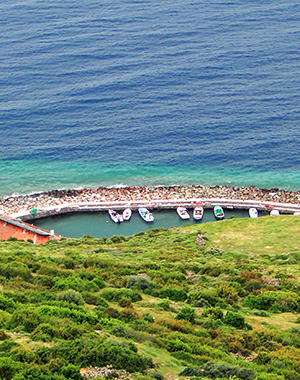
-
Assos: Roman Road
-
Return—Asia: Priene
-
Priene: Ancient Port
Today the ancient site of Priene, only a few miles from Miletus, is surrounded by land due to centuries of silting by the Maeander River. Like Miletus, one hardly would guess that the Aegean seashore, which today is many miles away, was right at the city’s edge. An important classical site perched high upon the hillside overlooking what used to be a gulf inlet, mighty Priene slowly succumbed to the Maeander River over centuries.

-
Priene: Water Terminal
Water was crucial to ancient life, and Romans had perfected water systems to supply cities across the empire. Each system required distribution terminals to coordinate the water flow to various parts of the city. These terminals normally were hidden underground, but one of these distribution terminals that supplied Priene has been discovered.

-
Priene: Ancient Port
-
Return—Asia: Miletus
-
Miletus: Harbor Silting
Paul called the Ephesian elders down to Miletus where his ship had put into port on his way to Jerusalem to deliver the collection. Here at Miletus, he gave his famous “farewell sermon” in Acts 20:13–36. Today the ancient site of Miletus is surrounded by marsh and soggy land due to the centuries of silting by the Maeander River. One hardly would guess that the Aegean seashore, which today is many miles away, was right at the city’s edge, nor that this city had two famous harbors in ancient times and was one of the great harbor cities of the ancient world.
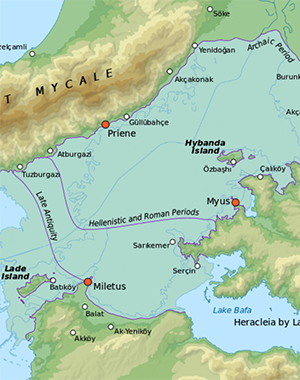
-
Miletus: Great Lion Harbor and the Miletus Shepherd
The great Lion Harbor was where the apostle Paul landed and departed Miletus at the end of the 3MJ (20:15, 38). Jean and I were by ourselves on the backside of the archeological site where no tourists go. We were searching without success for the remains of this harbor in the marshes. A shepherd far away spotted us, yelled to get our attention, left his flocks and came to us, and guided us exactly to the spot himself speaking absolutely no English but knowing exactly what we were looking for—the famous lion statues at the entrance to the Lion Harbor mentioned by numerous ancient writers—but now almost entirely covered in marsh waters. Otherwise, we never would have found the spot. His flocks he had left behind suddenly noticed his absence and became nervous and agitated, not knowing where he was. He called out to them in a loud voice, and, without even seeing him, they calmed immediately and went back to grazing. I thought of John 10:27–28, when Jesus said, “My sheep hear my voice.”
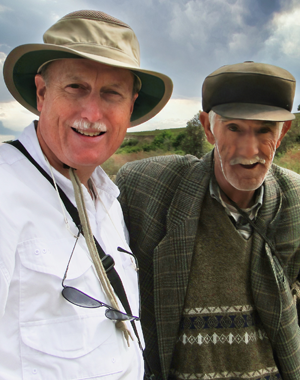
-
Miletus: Markets
A famous port city such as Miletus would have plenty of commercial activity and busy markets. Because of the boggy conditions, which can change dramatically from year to year, we were unable to walk the market streets. Fortunately, the Pergamon Museum in Berlin has the famous Miletus Gate, which led to one of the main markets in Miletus.
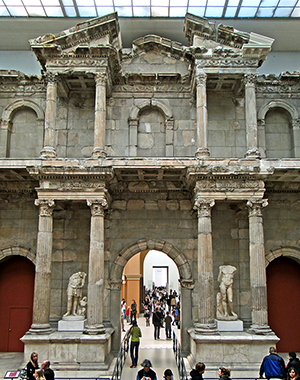
-
Miletus: "God-fearers" Inscription
The theater at Miletus was one of the largest in the ancient world. In ancient times, the Aegean Sea came right up to the theater, so crowds at the theater looked out over the other great harbor of Miletus, simply known as the Theater Harbor, and could watch the ships coming in. The theater is important for preserving an inscription that reserves seating for the Jewish community and for “God-fearers,” the very term Luke uses to refer to gentiles worshipping in the synagogue but not yet full proselytes to Judaism by undergoing circumcision. Reserved seating at the theater shows that elements of the Jewish community at Miletus were highly assimilated into Greco-Roman culture. For another excellent example of the use of “God-fearers” for gentiles attending the synagogue, see the synagogue inscription recently discovered at Aphrodisias.

-
Miletus: Aphrodisias "God-fearers"
Aphrodisias is a classical ancient site whose ruins are about 110 miles east of Miletus. The archeological museum at Aphrodisias holds a 3rd–5th cent. AD inscription on a nine-foot tall column recording over 100 names that probably stood at the entrance to a Jewish synagogue. The inscription honoring these named individuals uses the term “God-fearers” to notate part of the list. This Aphrodisias inscription, like the one in the theater at Miletus, illustrates Luke’s usage of the term “God-fearer.”

-
Miletus: Harbor Silting
-
Return—Asia: Didyma
Had the Apollo temple at Didyma ever been completed, this edifice would have been a monstrosity and surely one of the wonders of the ancient world. The temple never was completed, however, being too ambitious a project and too grand in scale, so beyond the financial resources even of generous individual and state donors. An Apollo oracle at Didyma, however, made the city famous, which rivaled the most famous Apollo oracle in the world at Delphi, Greece. An annual festival at Didyma drew large crowds. Celebrants made the ritual trek down the “Sacred Way” from Miletus down to Didyma.
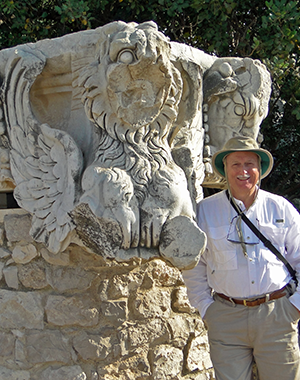
Videos > Videos-1MJ Videos-2MJ Videos-3MJ Videos-4JR Videos-Rev